Modern life is full of conveniences that we often take for granted. It’s easy to assume that everyday items have been around forever, but you might be surprised to learn that many of these things are relatively new. From the furniture we relax on to the roads we travel, many simple things we use daily have only become common in the last few centuries. Get ready to rethink your understanding of history as we explore 10 simple things that are not as old as you think.
Sofas
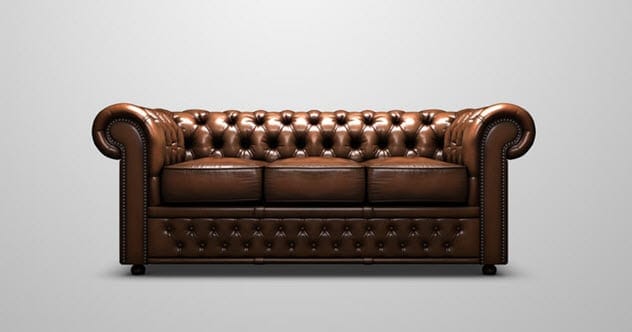
Sofas first appeared in the French royal court in the late 1600s. Noble French women were often depicted lying on them. However, these early sofas were more for reclining than sitting. They didn’t resemble the sofas we know today.
The chesterfield, created in the 1700s by Lord Chesterfield, was a design that resembles modern sofas. He wanted it to be a seat where the elite could sit with dignity. It became popular among the British upper class and quickly spread to mansions across the country.
The average person didn’t have a sofa until the Victorian era, as living rooms became more common. People preferred to invest in books or musical instruments rather than expensive furniture. The rise of radio and television gave people a reason to sit in their living rooms, and sofas became simpler and more affordable. By the end of World War II, most Western homes were built around a living room with a sofa and a television.
Highways

Today, we take highways for granted when traveling long distances. The US highway system makes crossing the country much easier. However, until recently, traveling across the United States meant dealing with awful local roads. The plan to build the highway system was only put in place in 1956 with the Federal Aid Highway Act. This act planned for over 64,000 kilometers (40,000 miles) of high-capacity interstate roads.
The goal was to eliminate unsafe roads and ensure fast and safe travel. President Eisenhower was concerned about evacuating population centers in case of a nuclear attack. During World War II, Eisenhower saw the highway system in Germany, built by the Nazi Party in the 1930s. He wanted to bring the same thing to America.
Building this ambitious highway system required sacrifices. Many towns were divided, and buildings, including homes, were demolished. Protests delayed the construction in many areas. The Interstate Highway System was finally completed in 1992.
Dinner Plates
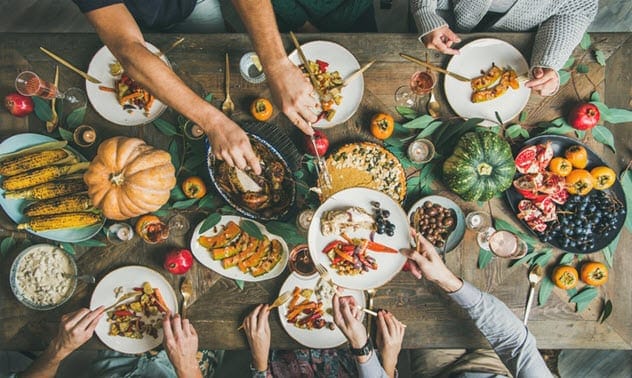
We’re used to eating our dinners from ceramic plates. But until recently, only the wealthiest could afford this luxury. Just a few hundred years ago, ceramic dinner plates were rare in the West.
In medieval times, most people ate from wooden bowls because most meals were soups and stews. Wooden bowls were simple and cheap. When something more like a plate was needed, people used a trencher, a piece of stale bread which could then be eaten or given to the poor.
The upper classes ate from pewter plates, but pewter often contained lead, leading to lead poisoning. In the 1600s and 1700s, the European nobility became obsessed with Chinese and Japanese culture. They loved to show off their fine china, which they imported from the East. Owning a full set of ceramics was very expensive.
During the Victorian age, the ceramics industry was industrialized. Places like Stoke-On-Trent in the UK made ceramic crockery for a fraction of the normal price. By the 1900s, nearly everyone in the UK and the US ate from ceramic plates.
Novels
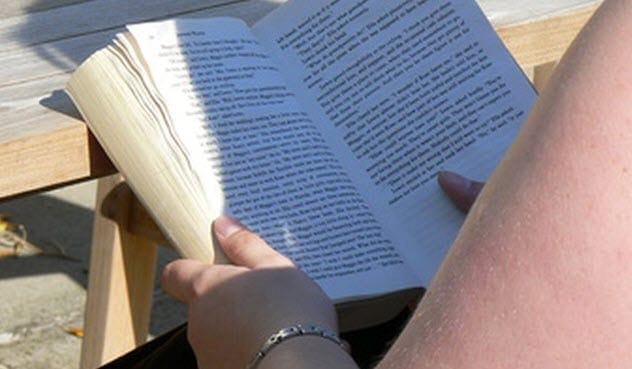
Literature and drama have existed for thousands of years. Ancient entertainment was designed to be performed communally, rather than enjoyed in private.
Back in Shakespeare’s day, plays were enjoyed like films are today. Reading was not required for most entertainment. The birth of the novel coincided with the rise of literacy among the common people. However, for most of history, books were largely nonfiction, serving as guides for a scholarly elite.
As more people became literate, a market emerged for those willing to read literature by themselves. The first novels often posed as biographies with sensational stories, like Robinson Crusoe and Moll Flanders. The novel as we know it today emerged in the early 1800s. Jane Austen’s Pride and Prejudice, published in 1813, gained widespread popularity.
Picnics
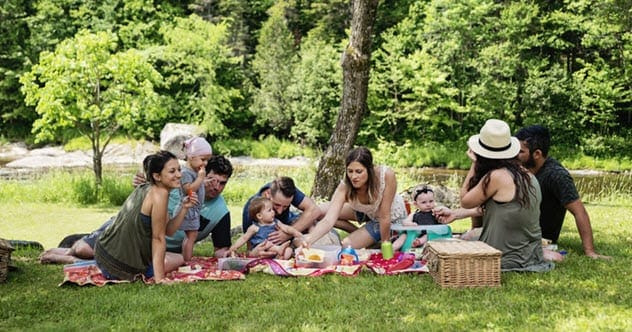
Picnics have a quaint charm, but their history is surprising. The picnic was usually an indoor party in the late 1700s. It was brought to Britain by exiled French nobles who were pushed out by the French Revolution.
These nobles jointly hosted parties to make them cheaper. One person provided the venue, and guests brought food and alcohol. For most of the Victorian era, a picnic meant a drunken indoor party, often featuring amateur plays.
In the early 1800s, the English middle classes adapted the picnic. Inspired by the Romantic movement and its glorification of nature, they took their parties outside. Both indoor and outdoor picnics existed until the early 1900s, when the outdoor picnic became more popular. The alcohol and partying were replaced by sandwiches and wicker baskets.
Supermarkets

Many dread the weekly trip to the supermarket. But not long ago, shopping meant going to multiple places: the bakery for bread, the butcher’s for meat, and the grocer’s for canned goods. These stores were run by individuals or families.
Chain stores appeared in the US in the 1920s, but the first supermarket didn’t appear until 1930. It took a long time for the world to adapt. In Britain, where the first supermarket opened in 1948, people struggled with the concept, feeling rude for taking items off the shelves themselves.
Throughout World War II, no British family bought food in a supermarket. Even as late as 1950, only 35 percent of America’s food was bought in supermarkets. The retail world we know today came about in the 1960s, with the rise of large, stylish supermarkets. Shopping centers also brought together smaller, specialized stores for convenience.
Ovens

Ovens are one of the oldest tools for cooking food. Thousands of years ago, they were simple constructions made from clay or dirt. Even through the medieval period, most households didn’t have an oven. Instead, they bought cooked food from the baker or paid to use his oven.
Ovens were large and difficult to manage. The first cast-iron ovens were made in the 1700s, and innovation during the Victorian age made them smaller and cheaper. Though the first compact iron ovens were commercially successful in the 1830s, most people still cooked over a hearth.
The modern product, with an internal oven and a cooktop, was only found in most houses in the West in the 1920s. By that time, electric ovens had begun to compete with gas ovens.
Backyards

Our backyards today are places of entertainment and enjoyment. We use them for barbeques or to relax on the patio. But until recently, yards were places of work, not leisure. Before indoor plumbing, most homes had an outhouse at the bottom of the yard.
Before refrigeration, families dug root cellars in the yard to store food. Much of the yard was used as garden space for growing vegetables like carrots and potatoes. Even in urban areas, the yard supplemented the household economy.
It might be used for woodwork or to keep animals like chickens. Using the yard as a practical place ended in the postwar economic boom of the 1950s and ’60s. Advertisements portrayed the home as a place of rest from work. Society changed, and the yard turned into a place of luxury rather than work.
Forks
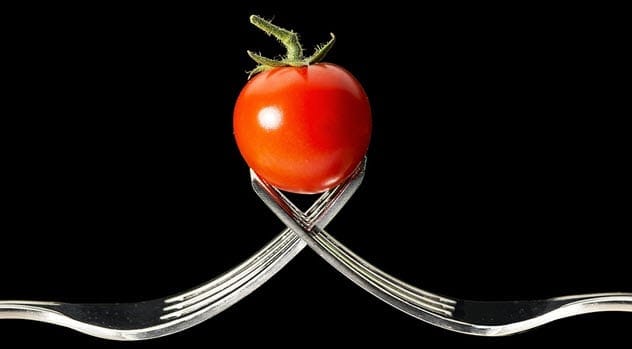
We’ve been using forks in the West for hundreds of years as a farming tool. Using a small fork for eating was a novelty. From the medieval period people used a knife to eat. Wealthy people had special spoons, but these were handed out and collected at mealtimes.
When a second implement was needed, most people used their hands. This is why they washed their hands before and after every meal. At first, forks were distrusted and ridiculed. Medieval religious writers saw them as unnecessary vanity. The few medieval forks were usually two-pronged.
The fork reached France in the late 1500s when Catherine de Medici brought it to the royal court. It remained a tool of the elite, entering common use in France in the 1750s and in Britain in the 1800s. Even then, some British sailors refused to eat with forks, considering them unmanly.
Beds

There are countless ways to customize a bed today. But the modern bed hasn’t been around that long. In the medieval period, beds were almost unrecognizable. If you were wealthy, your family would own one very large bed. This bed, surrounded by posts and curtains, was big enough for four or five people.
The average person made their bed on the floor with rushes and a blanket. Life in medieval times was more communal, and sharing sleeping space was common. The concept of the bedroom as a separate room was rare in the early medieval period. Separate bedrooms developed during the Renaissance.
Even then, it was common for siblings to share a single bedroom. Beds themselves continued to develop. The first spring mattress was designed in the Victorian era, but innerspring mattresses didn’t become common until the 1950s. By that time, minimalist bed frames had become fashionable.
Wrapping Up
It’s fascinating to realize that many of the simple things we use every day haven’t been around as long as we might think. From the evolution of sofas and highways to the relatively recent adoption of dinner plates and forks, our modern conveniences have come a long way. Understanding the history of these items gives us a new appreciation for the comforts we enjoy today.
What surprised you most on this list? Leave your comment below!










